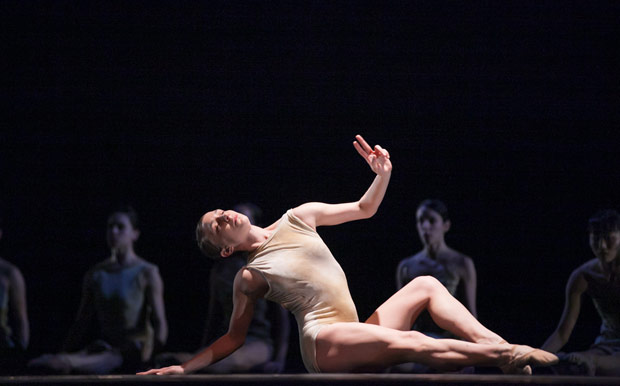
© Margo Moritz. (Click image for larger version)
Hubbard Street Dance Chicago & LINES Ballet
Little mortal jump, Azimuth, Too Beaucoup
Berkeley, Zellerbach Hall
2 February 2013
hubbardstreetdance.com
www.calperfs.berkeley.edu
A week after the Joffrey Ballet appeared in Berkeley, the second blast of the Windy City invasion hits as Hubbard Street Dance Chicago leaps onto the stage at Zellerbach Hall in Little mortal step. This ballet, by resident choreographer Alejandro Cerrudo, is energetic, whimsical, even a bit serious at times and a tremendous audience hit. I’ll attempt to be more forgiving than I sometimes am because it’s important to remember that many spectators are simply enjoying the dance and anything I have to say is largely irrelevant to them. In the five decades I’ve been watching dance I’ve seen an enormous amount and there isn’t much that’s really new anymore. In the beginning I thought everything was amazing and as time went on I gained perspective. I can just hope that that are some who are interested in what I write.
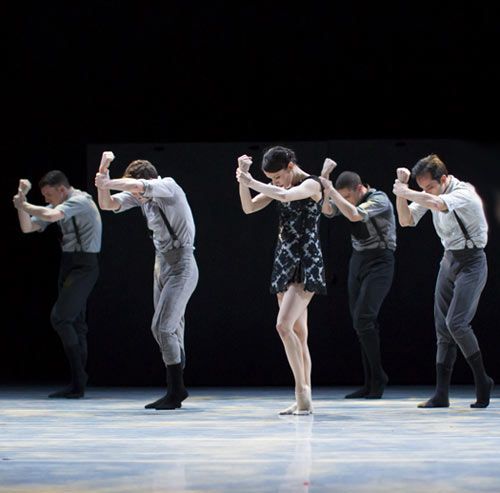
© Todd Rosenberg. (Click image for larger version)
But back to this ballet. A man emerges from the audience and runs onto the stage. He does a very fast and precise bit of what I call generic contemporary ballet. The moves all look like magnified gestures, executed with maximum efficiency and accuracy, ending only when he dives into the orchestra pit. More people run on and off stage doing quirky movements. Four large panels form a wall that splits apart, rotates, reassembles. But best of all, two panels are covered in velcro and when a couple of dancers dressed in velcro suits throw themselves against them they are stuck splayed across them. Several pas de deux alternate with groups often in unison. The music runs the gamut from Philip Glass to Tom Waits and Kathleen Brennan. All of this mix of shenanigans is highly amusing and yet at moments very touching, especially the end when one couple moves toward back center stage and pushes the wall; it splits into rotating parts, darkness swallowing them as the four separate panels turn mysteriously in the shadows. The dancers are really top-notch, razor-edge precise and boundlessly energetic, but limited to an eclectic vocabulary reflecting a Nederlands Dans Theater aesthetic that continues in the same vein with little variation in the rhythmic dynamics.

© Margo Moritz. (Click image for larger version)
Hubbard Street Dance and LINES Ballet join forces in Azimuth; Alonzo King’s choreography for this ballet could hardly be more distinctly different from Cerrudo’s of the previous one. Often the work King makes on his own company can begin to look too similar, but here, with new artists on whom to create, he seems to find fresh inspiration. The stage is filled with bodies and at the center one tall woman starts her own private dance ritual. Gradually movement phrases emerge from the group until one large mass runs unstoppably in a giant circle, expanding and contracting, like a gigantic organism. Once they stop running, bits of choreography ripple through the group creating visual echos. The rest unfolds in small groups of men or women, a section for one woman who switches between being lifted high above by four men and climbing on their backs, a pair of pas de deux, as well as large group portions. The movement is lush and sensual with constantly changing levels and textures. There is time and space for the dancers to experiment with their individual voices. The music, comprising of some original compositions by Ben Juodvalkis with other works by the Chamber Choir of Versija, Escolania de Montserrat, Richard Kaplan and Mrs. SIdney Carter, is largely of a religious or spiritual nature and helps frame the piece as one with higher aspirations beyond the mundane world. But, most importantly, the dancers from both companies form a new entity and move as if they work together all the time. I ask creative director and costume designer, Robert Rosenwasser, during the intermission exactly how the joint project was accomplished. The two troupes spent two weeks together at the end of August/beginning of September to develop the choreography. They did not work together again until three days before the opening on Friday, February 1, almost five months later. Of course they rehearsed separately, but didn’t dance with each other till Tuesday when they had a studio rehearsal, then with only two days on stage to tweak all the technical and artistic issues, they did the premiere. Rosenwasser says that both groups of dancers are very excited to work together and I think that is the key to the ballet’s success. Finishing such a huge project in such a short time is a miracle in my book.
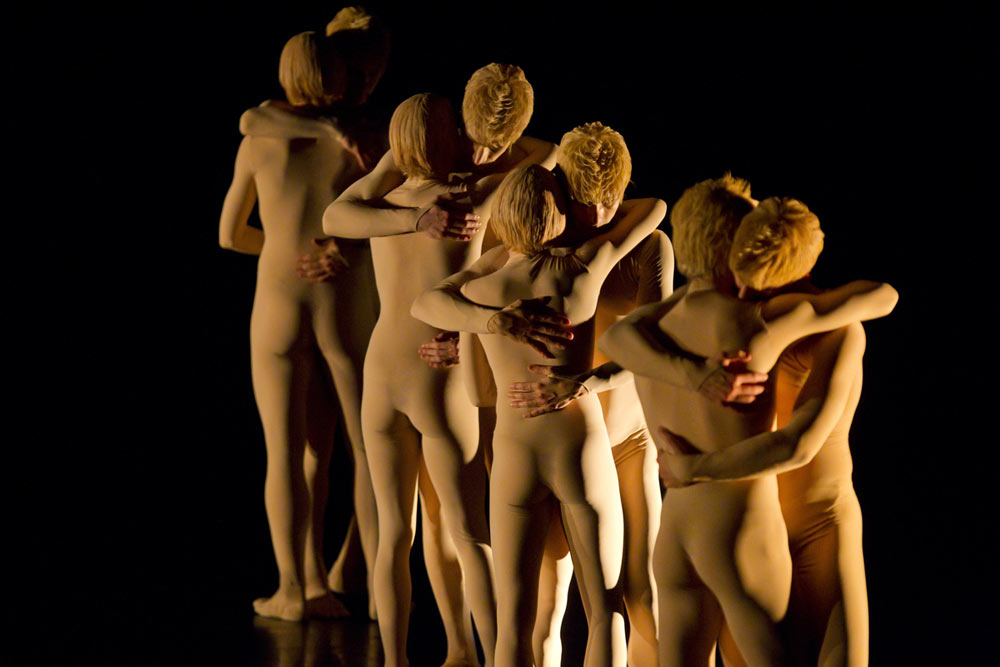
© Todd Rosenberg. (Click image for larger version)
The final Too Beaucoup, created by Sharon Eyal and Gaï Behar, is exactly that – too much of everything except costume variations. The unisex flesh unitards, wigs, make-up and white contact lens suggest aliens from who-knows-where and the robotic choreography to yet another compilation of music by various composers/musicians is even more soul-deadening, especially after going on fifty percent too long. Only the too-little-too-late ending of four couples in an embrace in a line stage right, offers a human touch. Well-danced for sure by this amazing company, but to what purpose? Perfect synchronisation in itself isn’t enough. In fact I truly relish imperfections. They are what make life and art worth examining closely.







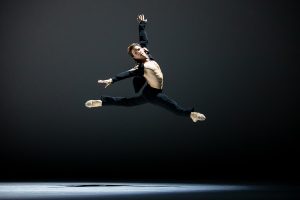
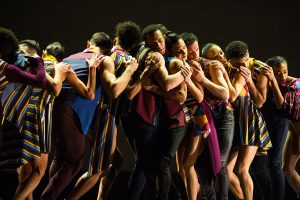
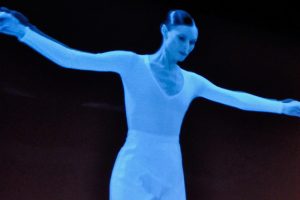





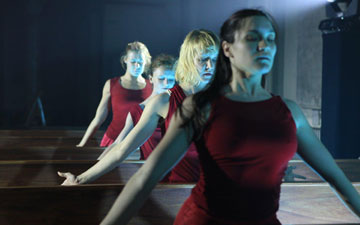

You must be logged in to post a comment.